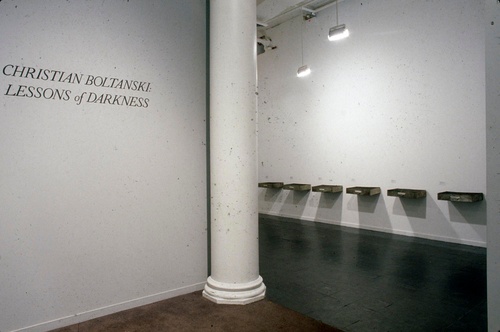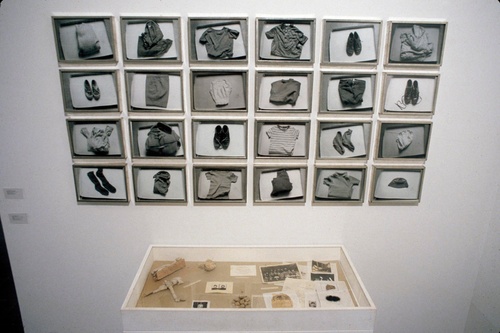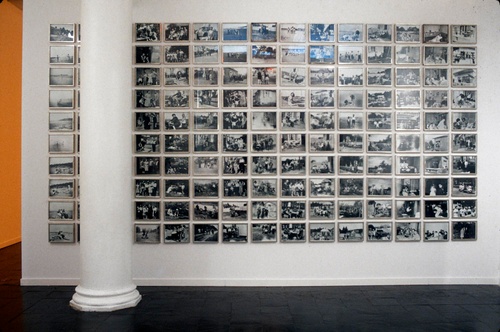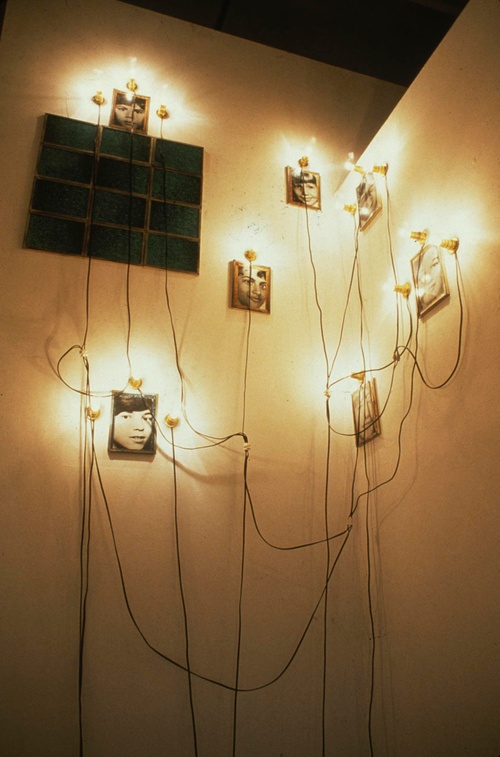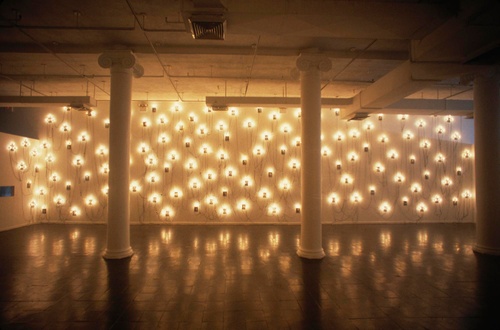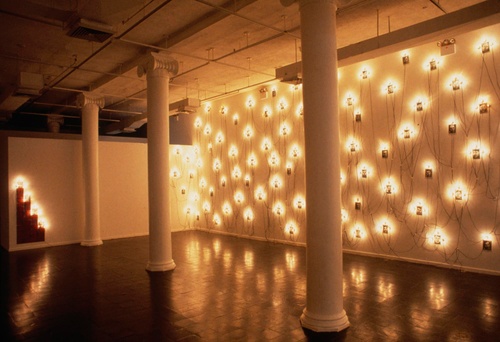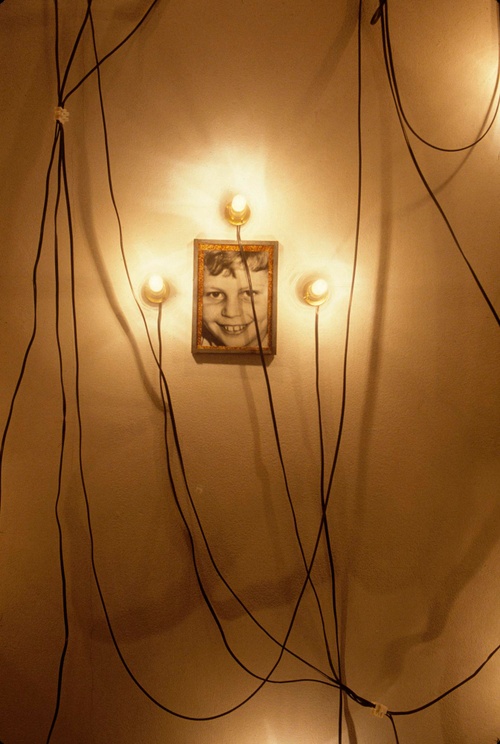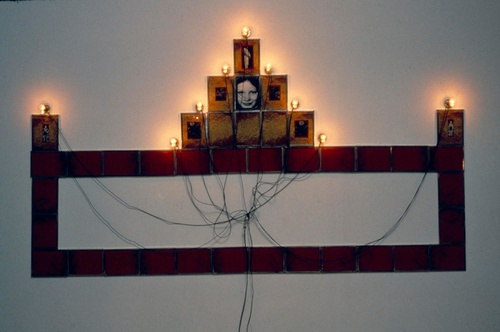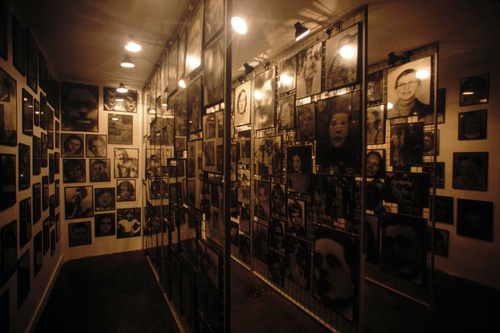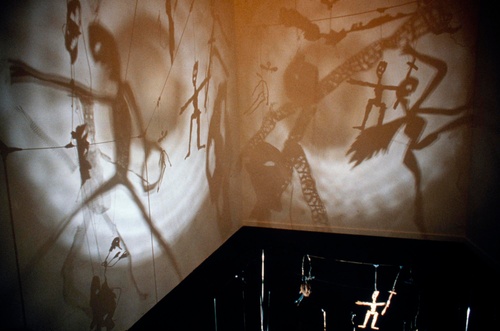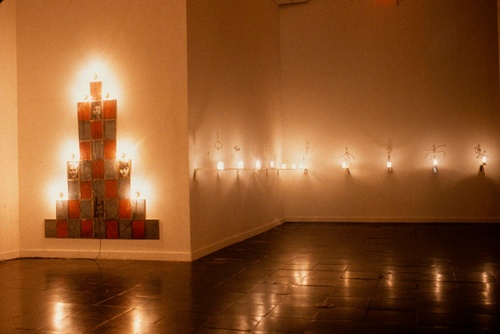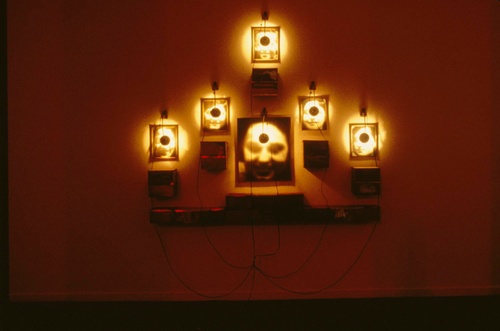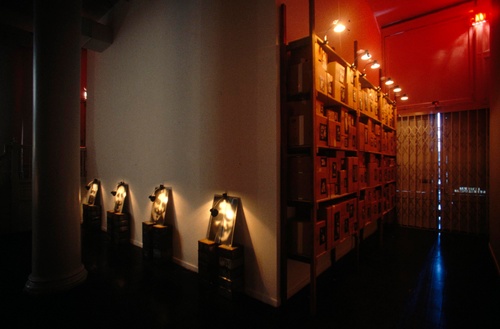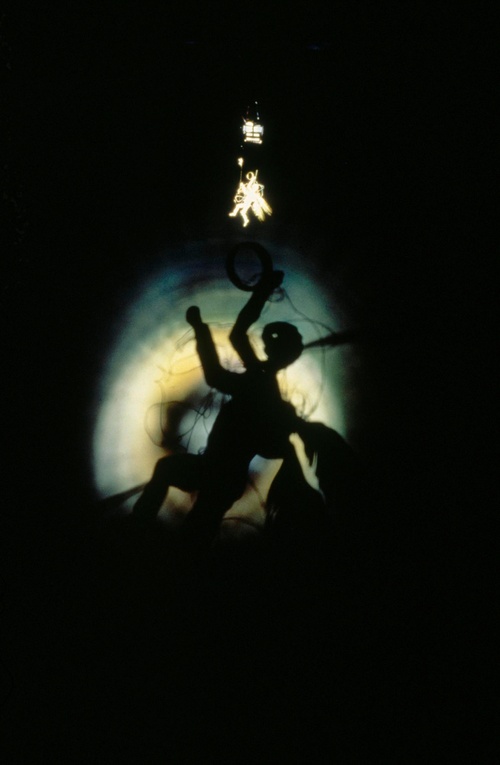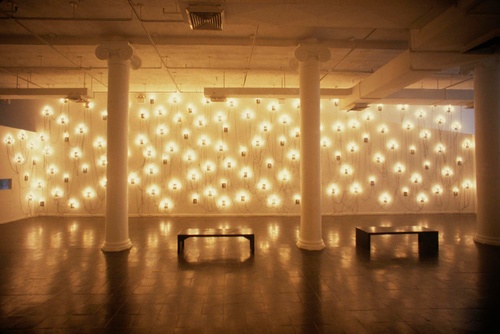Christian Boltanski: Lessons of Darkness
Christian Boltanski: Lessons of Darkness
“Christian Boltanski: Lessons of Darkness” was the first in-depth exploration of Christian Boltanski’s art in an American. The New Museum was transformed during its duration, and much of its exhibition space completely darkened, with the sole illumination provided by works in Boltanski’s series Lessons of Darkness, which reflected on the artist’s Jewish heritage and the horrors of the Holocaust.
The impetus for the exhibition was a trip to France that exhibit curators Lynn Gumpert and Mary Jane Jacobs undertook to view contemporary art in November 1985. While there, they met Christian Boltanski for the first time. Wrote Gumpert and Jacobs of their meeting, “Although we were familiar with some early pieces that had been exhibited in New York at Sonnabend Gallery, neither of us was aware of the changes his art had recently undergone… It quickly became apparent that one of France’s most important artists, so influential to the younger generations we were visiting, had not received the exposure on this side of the Atlantic that his work merited.”1
Boltanski had garnered a solid following in Europe, but there had never been an extensive showing of his work at an American museum, This exhibition, then, served two purposes: it functioned as an introduction to his work from the early seventies to the late eighties, and it provided a more focused look at a few specific themes which were of consistent concern throughout his career.”2
Wrote Mary Jane Jacobs in the exhibit’s catalogue, “Christian Boltanski’s work is about life; he loads his work with images of people…His highest goal is for his art to be mistaken for life itself. To Boltanksi, uniting art and life is essential in order to make effective and meaningful work. ‘For me,’ he has remarked, ‘painting isn’t provocative or moving, only life is moving. But I am an artist and therefore all I do is termed art. I can only postpone the viewer’s awareness of my work as art. One day, of course, it’s forcibly discovered. The fascinating moment for me is when the spectator hasn’t registered the art connection, and the longer I can delay this association the better.’ Working with this goal in mind, he has defined since 1968 his own unique position on what it means to be and avant-garde artist: art for Boltanski, is avant-garde when you cannot name whether it is art or life.”3
